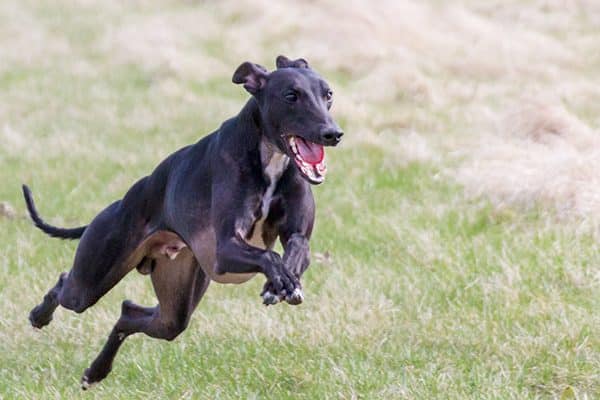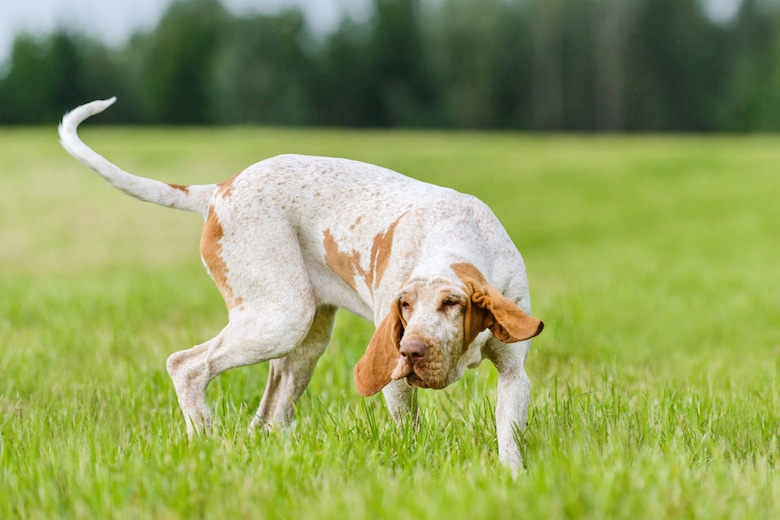My dog Sasha brought me a dead rat the other day. Fortunately, I was able to see the rodent in her mouth as she approached the door and I stopped her from bringing it in the house. Sasha, an Australian Shepherd and Border Collie mix, plopped the rat on the doormat with a satisfied look. You could just see by the glint in her eyes how pleased she was with herself. I told my husband there was a dead rat on the doorstop that needed to be dealth with, and I immediately went online to find out more about dogs who exhibit this type of behavior known as strong prey drive.
First, some back-story. We live in the mountains, and wildlife abounds outside as well as outside our house. To Sasha, our backyard must seem like a smorgasbord. In addition to rats there are lizards, birds, squirrels, deer, wild turkeys, raccoons, possums, and skunks — not including the neighbor’s free range chickens. In fact, one time Sasha smelled a skunk outside our bedroom and ran right into the French doors — shattering the window pane. Fortunately she wasn’t hurt, and the impact startled her so much she stopped pursuing the skunk. But still, that’s some strong prey drive.
Dogs with strong prey drive are more likely to follow a moving object, and this can be useful when training a dog for agility work. The prey drive has a five-step sequence: the search, the eye stalk, the chase, the grab bite, and the kill bite. Not all of the five behaviors are the same intensity for every dog, and some of the behaviors have been amplified through training and breeding. Beagles, for example, have a strong search tendency, while a Border Collie has a more pronounced eye stalk, and a Greyhound has a innate desire to chase.
Other breeds with a strong prey drive include Afghan Hounds, Alaskan Malamutes, Australian Cattle Dogs, Basenjis, Beagles, Bullmastiffs, Doberman Pinschers, Jack Russell Terriers, Rhodesian Ridgebacks, Samoyeds, Shiba Inus, Siberian Huskies, Weimaraners, Whippets, and Yorkshire Terriers.

I asked Gloria Post, a certified dog trainer with Hands On Dog Training, how I could best work with my dog, given her predisposition for pursuing prey. Post mentioned training methods I could use to help distract Sasha and help her to ignore the stimulus. She said pet parents shouldn’t reprimand their dogs for exhibiting this behavior, but rather, redirect their attention.
A pet parent needs to learn to scan the environment and watch for possible prey that the dog might want to chase. My husband and I have a usual route that we walk with Sasha, and I’m aware of the areas where ground squirrels (Sasha’s favorite) are most likely to appear. Post said that when you see a prey animal, engage your dog so that she’ll give you eye contact and keep looking at you while walking by the prey animal. She recommends establishing this behavior by using highly rewarding treats so your dog equates eye contact with you as more appealing than the running squirrel.
She also recommended training your dog to have a strong recall — coming quickly when called. You can start out in more controlled environments, using tasty treats, and then work up to practicing recall in places where prey are more likely to be found. Post cautioned that your tone of voice has a big impact on how your dog responds. “Yelling and screaming at your dog can actually cause them to get more excited about the chase, which would be more rewarding for them,” she said. Try happy or playful instead.
Some good activities for dogs with a strong prey drive are those that are mentally challenging and also physically tire out the dog. Post suggests swimming or splashing in the water, searching for hidden treats, climbing, or directed digging in a sandbox. Nose work and tracking would also be a great activity to help dogs focus their attention away chasing prey.
Does your dog have a strong prey drive? Let me know in the comments!
Related stories on dog behavior and training:
• 5 Myths About Dog Behavior That Can Lead to Tragedy
• 4 Things You Should Know About Your Dog’s Growl
• The 10 Types of Dog Aggression
Featured Image Credit: GettyImages










